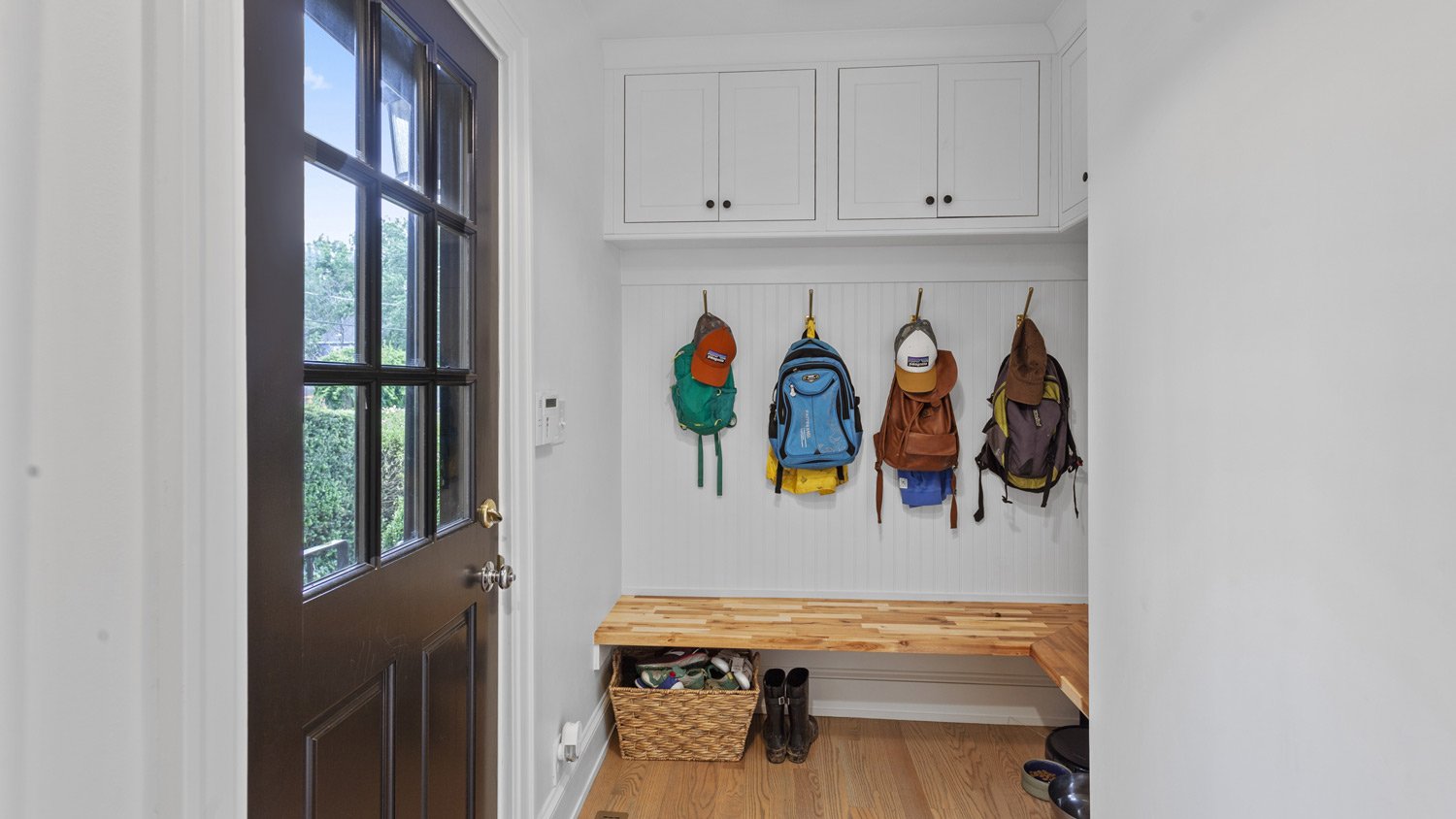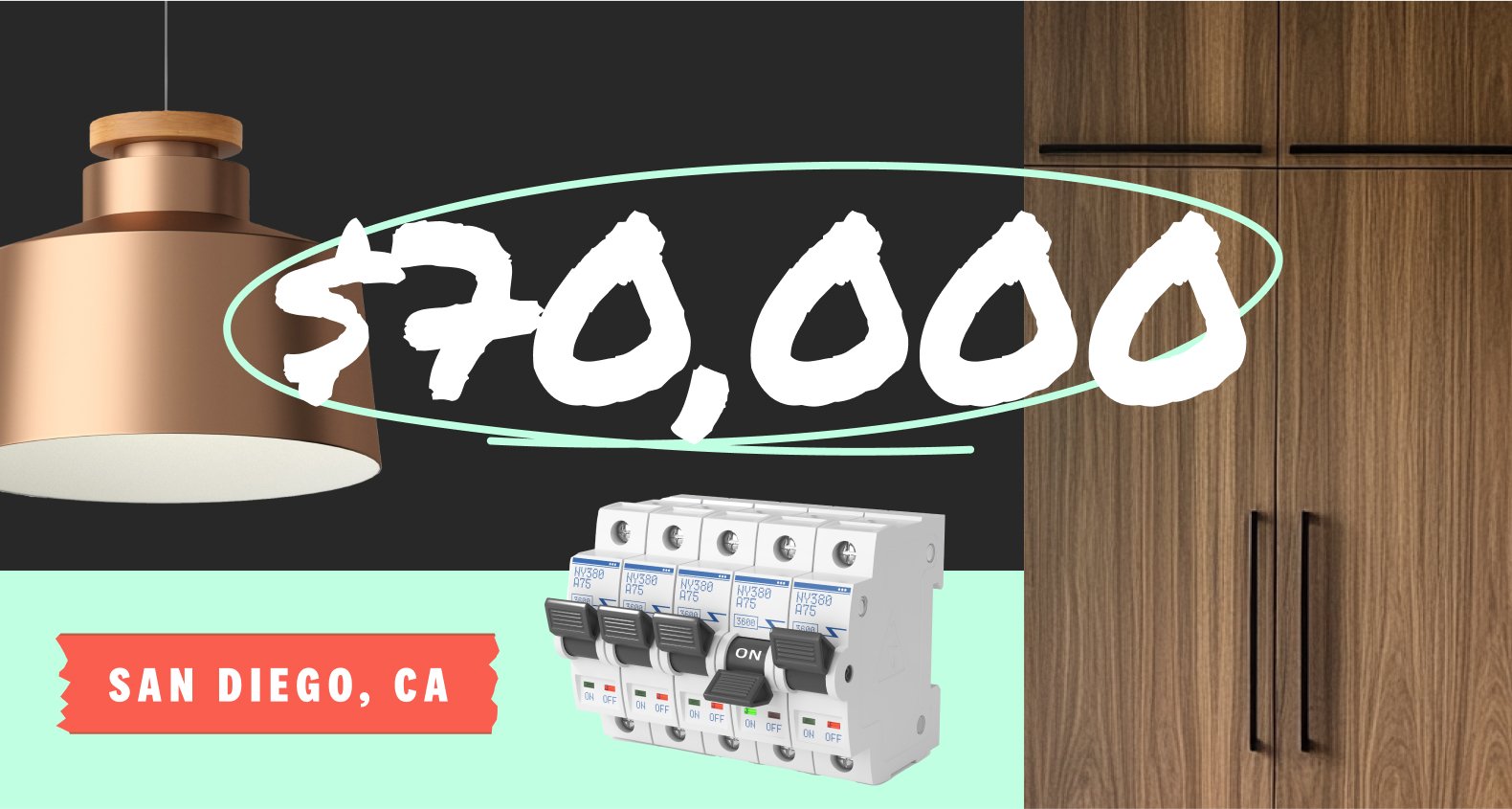What Is a Mudroom? And Should You Add One?
Mudrooms provide a dedicated area to contain dirt and water from outside in your home


Mudrooms help keep the rest of your home clean and organized.
They add value to your property.
A mudroom addition costs around $8,000–$16,000.
You may be wondering, What is a mudroom? It’s a small entryway into your home that serves as a place to store wet shoes and coats and trap dirt and debris from making their way into your living space. Mudrooms are largely utilitarian, but there are lots of ways to personalize the space and have it serve as a welcoming space for family members and guests. In this guide, we’ll discuss the pros and cons of adding a mudroom to your home and how to spruce up the area to make it a space you’re proud of.
What Is a Mudroom in a House?
A mudroom is usually a small room in your home about 50 to 100 square feet that serves as an entryway into your living space. Mudrooms typically have storage space for shoes, boots, coats, and other items you might take off when you enter your home. And as the name suggests, its main purpose is to prevent mud, dirt, water, and other outside debris from entering your clean living area.
Mudrooms are traditionally pretty bare bones. However, modern mudrooms not only serve that original purpose to protect your home from incoming debris but also to represent you and your home as the first thing people see when they come inside.
Common Mudroom Features

While it’s totally fine to have a few coat hooks and a rug to wipe your muddy boots on, your mudroom can serve a much larger purpose and can even end up being the organizational hub for your home. The success of a mudroom and the value it adds to your home depends on how well it’s set up and how convenient it is to use.
Below, we’ll discuss some important features you might want to consider if you’re building a room addition to turn into a mudroom.
Waterproof Flooring
What is a mudroom in a house without waterproof flooring? Since your mudroom’s primary purpose is to keep mud and rain out of your living space, you can bet the floors in the area are going to see a lot of water and moisture from boots, shoes, and dripping coats and umbrellas. Installing waterproof flooring is all but essential in a mudroom and will serve two purposes.
First, waterproof flooring will continue to look new for longer in an area like a mudroom, as it will naturally stand up better to exposure to the elements. Second, waterproof flooring will last significantly longer in a high-traffic, high-moisture area, meaning fewer repairs and replacements over time.
Paper Organization
Mudrooms don’t just have to be for hanging coats and taking off your shoes, and adding a hanging paper organization system with sections for each important category is a great option for keeping mail and school papers off your kitchen countertops or throughout your home, ultimately avoiding clutter.
Coat Hooks
Mudrooms are the ideal place to hang wet coats to keep them out of your living space. Depending on the number of people in your family, you may want to install three hooks per person so that everyone can hang a coat, purse, hat, or another item.
Shelving
Shelving in your mudroom can serve multiple purposes, including shoe storage and daily items. We suggest dedicating a space close to the floor for shoes so they aren’t scattered around your organized mudroom, and some additional shelves up top for keys, wallets, and other items you typically grab right before you head out. Having a dedicated spot for these items means you’ll always know where they are, and—more importantly—they’re always exactly where you need them.
Lockers
Building DIY mudroom lockers is a simple way to add some additional organization to your space while also bringing some elegance into an otherwise utilitarian area of your home. By giving each family member a dedicated locker, everyone can keep the items they will need on a daily basis handy, from keys to sunglasses, to ensure they don’t end up on the counter.
Cabinets
Mudrooms mostly serve as a place to put on and take off outdoor wear, but since many homeowners use them for close family only and have guests enter through another entrance, they can also serve as a handy place to put some additional storage. A popular mudroom idea is to install storage cabinets if you have extra space for things like holiday decorations, seasonal clothes, and more.
Bench
A bench can be a convenient addition to your mudroom that gives you a place to sit to put on or take off your shoes. A popular option is to build a bench above shoe cabinets and under or in front of storage lockers, providing an all-in-one solution for clothes storage and a place to sit to put on or take off your shoes or boots.
Where Should a Mudroom Be Located?
The best place to put a mudroom is simply where you’ll use it the most. If your family has a main point of entry, then the mudroom will be the most valuable leading from that entrance into your home.
Many homeowners use their mudrooms for personal use only, where close friends and family members enter through the mudroom, but guests and extended family enter through the main entrance into a foyer or directly into a living area. In that case, your mudroom would be best located at a side entrance or through your garage so you can reserve the primary entrance for guests.
We recommend contacting a home addition company near you to discuss where the best place to install a mudroom would be to add maximum value and detract the least from your living area.
Mudroom Pros and Cons
Mudrooms serve a few different and important purposes and provide a slew of benefits to homeowners who have them. Fewer carpet cleanings, welcoming entryway flooring, But before you spend money on mudroom construction costs, consider the drawbacks—like the need for a home addition building permit and the possibility of clutter—as well.
| Mudroom Pros | Mudroom Cons |
|---|---|
| Less dirt making its way into your home | Costs $8,000–$16,000 for 50 square feet of space |
| Storage for shoes, keys, coats, and more | It could create more clutter if it isn’t well-organized |
| Multifunctional space for mail and school work | Potential damage to flooring due to wet items |
| Better overall organization | Can be an involved process |
| Place to sit down to take off your shoes | May require a home addition permit |
| Customizable to suit your aesthetic | May intrude on entryway, hallway, laundry room, or even living space |
Does a Mudroom Add Value to Your Home?
Adding a mudroom adds value to a house. The average mudroom addition yields about a 50% return on investment. So if you were to spend $10,000 on a new mudroom, your home value could potentially increase by about $5,000. But a mudroom adds value in other ways, too.
If you choose to sell your home, prospective buyers will see the appeal of a mudroom, not only from a storage standpoint but also because it helps keep the interior living area clean and tidy. In many cases, this could prompt buyers to offer more for your property.
Mudrooms can also prolong the life span of building materials—particularly your flooring—throughout the rest of your home from water damage and scratching.
It’s important to note, however, that mudrooms can detract from your home’s value if not placed or set up properly. Unless you plan on building a home addition or bump-out for the mudroom, it will take up space you could otherwise allocate to the living area.
Frequently Asked Questions
The term “mudroom” comes from the primary use of the space: to collect mud, dirt, snow, and rainwater from outside and prevent it from entering your living area. Mudrooms are typically equipped with waterproof flooring and storage for wet and dirty coats and boots, making them ideal entryways for these purposes.
A foyer is usually a more formal landing or entryway that leads into your home from the primary entrance, whereas a mudroom is a more casual room that usually leads in from a secondary entrance to your home. A foyer is more often a space that connects directly to your living space for guests to use, and a mudroom is a closed-off area that close family and friends use to keep mud, dirt, and water out of your home.
The average mudroom size is around 50 square feet, with common dimensions being 6 feet by 6 feet and 7 feet by 9 feet. Mudrooms are small because they are typically only used for putting on and taking off outdoor wear, and larger mudrooms can detract from the living space inside. With that being said, mudrooms can be as large as you need them to be if you plan to use them for storage as well, but they are rarely more than 75 square feet.





- Bathroom Remodeling
- Kitchen Remodeling
- Shower Installation
- Stair Installers
- Bathtub Installation
- Shower Door Installers
- Kitchen Design
- Bathroom Design Companies
- Storm Shelter Builders
- Pre-Made Cabinets
- Kitchen Refacing
- Bathtub Replacement
- Ceiling Tile Installation
- Suspended Ceiling Companies
- Residential Designers
- Stair Builders
- Remodel Designers
- Shower Enclosures
- Home Renovations
- Kitchen Renovations
- Garage Remodeling
- Grab Bar Installation
- Walk-In Tub Installers
- Tub to Shower Conversion
- Balcony Contractors










